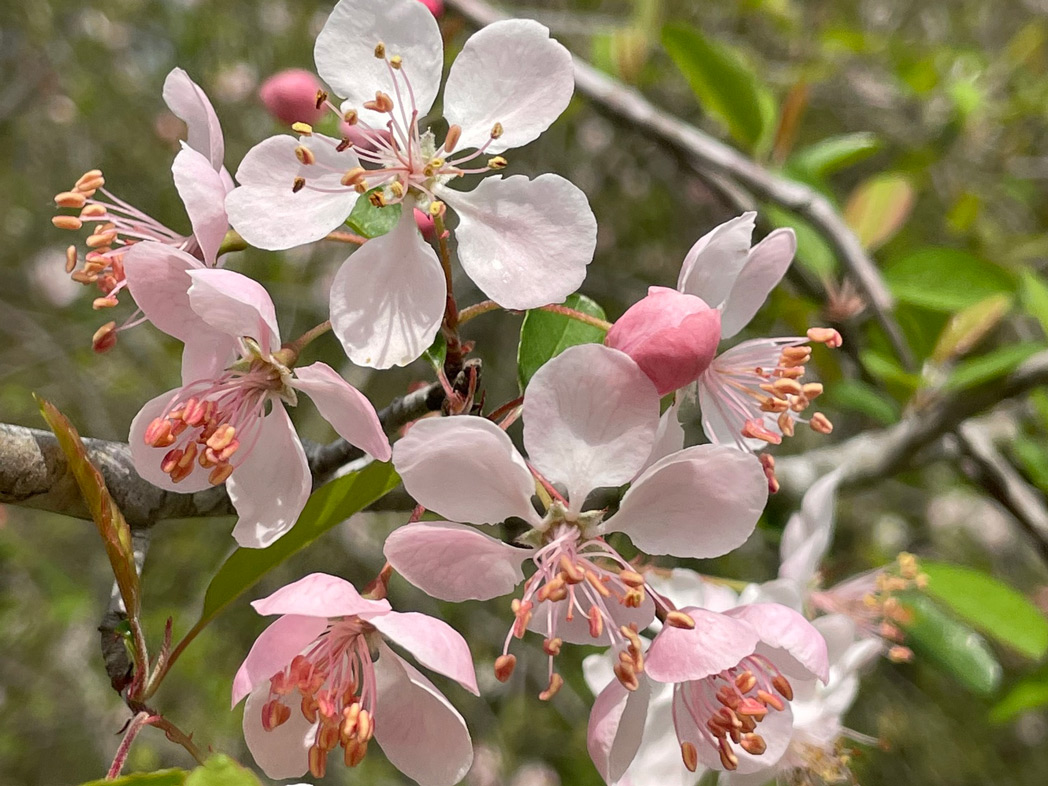Southern crabapple
Pictured above: Southern crabapple (Malus angustifolia) by lillybyrd (CC BY-NC). Click on terms for botanical definitions. View post as a PDF.
Southern crabapple is a deciduous flowering shrub to small tree with showy pink blossoms. It occurs naturally in open woods and disturbed areas in Florida’s Panhandle, where it is a state-threatened species. Its fragrant spring blooms are pollinated primarily by bees, but butterflies are also known to visit them. Birds and other wildlife love its ripe fruits.
Southern crabapple flowers are pink, five-petaled and borne in clusters of three to five. They appear in early spring and give off a very sweet fragrance. Leaves are elliptic to ovate and 1 to 2 inches long with serrated margins. They are alternately arranged. Stems and trunk bear leafy thorns. Fruits are yellow-green, apple- to pear-shaped, and grow to about an inch in diameter. They are edible but are astringent and sour when raw due to the presence of malic acid. They are best when made into jelly or jam and are an excellent source of pectin (so no extra pectin is needed when making jelly or jam).
The genus name Malus comes from the Latin malum, referring to the malic acid content. The species name angustifolia comes from the Latin angustus, or narrow, and folia, or leaf.
Family: Roseacea
Native range: Central and east Panhandle
To see where natural populations of Southern crabapple have been vouchered, visit florida.plantatlas.usf.edu.
Hardiness: Zones 8A–9B
Soil: Moderately moist to moderately dry sand, clay or loam
Exposure: Full sun to partial shade
Growth habit: up to 30’ tall, up to 20’ spread
Propagation: Seed, division of suckers
Garden tips: Southern crabapple makes a lovely specimen or ornamental tree. It is long-lived, slow-growing and adaptable to moist and dry conditions. It is not salt tolerant.
Southern crabapple plants are often available from nurseries that specialize in Florida native plants. Visit www.plantrealflorida.org to find a nursery in your area.

